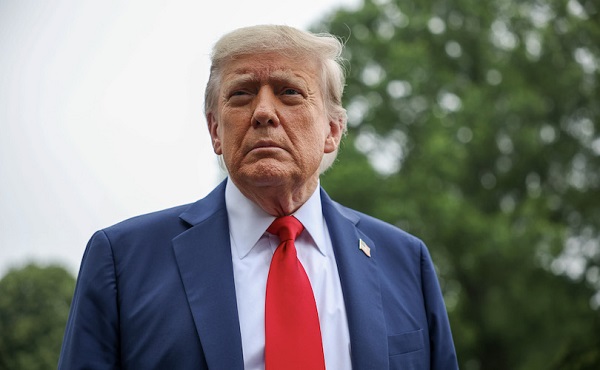COVID-19
Pfizer reportedly withheld presence of cancer-linked DNA in COVID jabs from FDA, Health Canada

From LifeSiteNews
According to information released by the Epoch Times, Pfizer purposefully failed to advise drug regulators, including Health Canada, the U.S. FDA and the European Medicines Agency, that the cancer-linked SV40 DNA enhancer was present in their experimental COVID shot.
Pharmaceutical giant Pfizer reportedly “chose not to” inform Health Canada, the U.S. Food and Drug Administration and other regulatory agencies that the cancer-linked Polyomavirus Simian Virus 40 (SV40) DNA sequence was in their widely distributed COVID-19 vaccine.
According to information released April 23 by the Epoch Times, Pfizer purposefully failed to advise drug regulators, including Health Canada, the U.S. Food and Drugs Administration, and the European Medicines Agency, that SV40 was present in their experimental COVID shot.
“I understand that there have been internal discussions at CBER [Center for Biologics Evaluation and Research] regarding the presents [sic] of an SV40 enhancer/promoter sequence, noting that its presence is unrelated to the purpose of the Pfizer’s plasmid as a transcription template for their mRNA COVID-19 vaccine,” Dr. Dean Smith, a senior scientific evaluator in Health Canada’s Vaccine Quality Division, wrote in an email to a colleague at the FDA about SV40.
The August email was obtained by an access to information request by the Epoch Times.
“Pfizer has communicated to us recently, that they apparently chose not to mention this information to EMA, FDA or HC at the time of their initial or subsequent submissions,” he added.
Smith noted that Kevin McKernan, a microbiologist and former researcher and team leader for the MIT Human Genome project, and Dr. Phillip J. Buckhaults, who is a professor of cancer genomics as well as the director of the Cancer Genetics Lab at the University of South Carolina, had raised in a public manner earlier this year how SV40 was present in the jabs.
While Health Canada originally told Canadians it was unaware of the SV40 enhancer’s presence, the agency has since confirmed the presence of the monkey-linked DNA sequence known to cause cancer when it was used in old polio vaccines.
SV40 is used to enhance gene transcription when the shots are made. It has been linked to the spread of turbo cancers in those who have been exposed to the virus via contaminated injections.
According to a 2002 study published in the Lancet, there is evidence that links the older polio vaccines, which were filed with SV40 contaminants, to certain forms of cancer.
Polio vaccines from the late 1950s to the early 1960s were all contaminated with SV40, after it was discovered that the virus was present in the monkey kidney cells which vaccine makers used to create the shots.
The authors of the 2002 study claim that the SV40-contaminated polio vaccine may have caused up to half of the 55,000 cases of non-Hodgkin’s lymphoma diagnosed each year.
SV40, according to the late vaccine developer Dr. Maurice Hilleman, was put in the polio vaccine and then put into wide circulation by Big Pharma company Merck inadvertently.
Unfortunately, this is not the first evidence that Pfizer hid the presence of SV40 from drug regulators.
According to Dr. Janci Lindsay, who works as the director of toxicology and molecular biology for Toxicology Support Services, Pfizer did not disclose the presence of SV40 “promoters” to both Health Canada and the U.S. Food and Drug Administration, as well as the European Medicines Agency.
She said, as reported in The Epoch Times, that the drug company “hid them.”
“So it’s not just the fact that they’re there, it’s the fact that they were purposefully hidden from the regulators,” she noted.
The news of Pfizer’s purposeful withholding of information comes as adverse effects from the first round of COVID shots have resulted in a growing number of Canadians who have filed for financial compensation over alleged injuries from the jabs, via Canada’s Vaccine Injury Program (VISP).
Thus far, some VISP has already paid over $6 million to those injured by COVID injections, with some 2,000 claims remaining to be settled.
Additionally, a recent study done by researchers with Canada-based Correlation Research in the Public Interest showed that 17 countries have found a “definite causal link” between peaks in all-cause mortality and the fast rollouts of the COVID shots as well as boosters.
COVID-19
New Peer-Reviewed Study Affirms COVID Vaccines Reduce Fertility

Here’s what the numbers reveal, and what it could mean for humanity
What was once dismissed as a “conspiracy theory” now has hard data behind it.
A new peer-reviewed study out of the Czech Republic has uncovered a disturbing trend: in 2022, women vaccinated against COVID-19 had 33% FEWER successful conceptions per 1,000 women compared to those who were unvaccinated.
A “successful conception” means a pregnancy that led to a live birth nine months later.
The study wasn’t small. It analyzed data from 1.3 million women aged 18 to 39.
Here’s what the numbers reveal, and what it could mean for humanity.
First, let’s talk about the study.
It was published by Manniche and colleagues in the International Journal of Risk & Safety in Medicine, a legitimate, peer-reviewed journal respected for its focus on patient safety and pharmacovigilance.
The study was conducted from January 2021 to December 2023 and examined 1.3 million women aged 18–39. By the end of 2021, approximately 70% of them had received at least one COVID-19 vaccination, with 96% of the vaccinated cohort having received either the Pfizer or Moderna vaccine.
By 2022, a stark difference was clear.
The vaccinated cohort averaged around 4 successful conceptions per 1,000 women per month.
That’s a staggering 33% LESS than the 6 per 1,000 seen in the unvaccinated group.
This means that for every 2 vaccinated women who successfully conceived and delivered a baby, 3 unvaccinated women did the same.
In 2022, unvaccinated women were 1.5 times MORE likely to have a successful conception.
Again, that’s a conception that led to a live birth nine months later.
The authors did not jump to the conclusion that their study proved causation. They cited that other factors may have played a role, such as self-selection bias
However, the researchers noted that self-selection bias does not explain the timing and scale of the observed drop in fertility.
Moreover, birth rates in the Czech Republic dropped from 1.83 per 1,000 women in 2021 to 1.37 in 2024, adding further evidence that the COVID-19 vaccines may be contributing to the decline in fertility.
That downward trend, the researchers argue, supports the hypothesis that something beyond individual decision-making may be affecting conception rates.
As such, they argue that the study’s results warrant a closer and more thorough examination of the impact of mass vaccination.
If this study holds true, and vaccinated women are really much less likely to have successful conceptions, the implications for humanity are massive.
Millions of babies could be missing each year as a result of COVID vaccination, and recent data from Europe and beyond already point to a deeply disturbing trend.
NOTE: Europe experienced a sharper decline in births than usual from 2021 to 2023.
Live births fell from 4.09 million in 2021 to 3.67 million in 2023, marking a 10.3% decline in just two years.
The new Czech study adds to growing evidence that COVID vaccines may be contributing to a dramatic decline in fertility, just as many feared all along.
As Elon Musk warns, “If there are no humans, there’s no humanity.”
Whether the shots are the cause or not, the trend is real—and it’s accelerating.
It’s time to stop dismissing the signals and start investigating the cause.
Thanks for reading. I hope this report gave you real value. This is a critically important topic that deserves attention.
If you appreciate my work and want to help keep it going, consider becoming a paid subscriber.
99% of readers get this content for free. But just $5/month from the 1% keeps it flowing for everyone else.
If this work matters to you, this is the best way to support it.
Be the 1% who makes it possible.
Catch the rest of today’s biggest headlines at VigilantFox.com.
COVID-19
Ontario man launches new challenge against province’s latest attempt to ban free expression on roadside billboards

The Justice Centre for Constitutional Freedoms announces that Ontario resident George Katerberg has launched a legal challenge against the Ontario Ministry of Transportation for banning roadside billboards with social or political messages. Mr. Katerberg believes that the Ministry’s policies go too far and undermine the freedom of expression of all Ontarians.
This case goes back to March 2024, when Mr. Katerberg, a retired HVAC technician, rented a billboard on Highway 17 near Thessalon, Ontario, that featured images of public health officials and politicians alongside a message critical of their statements about vaccines.
After the Ministry rejected his proposed billboard several times on the grounds it promoted hatred, a constitutional challenge was launched with lawyers provided by the Justice Centre. Mr. Katerberg’s lawyers argued that the Ministry’s position was unreasonable, and that it did not balance Charter rights with the purposes of relevant legislation.
The Ministry later admitted that the sign did not violate hate speech guidelines and agreed to reconsider erecting the billboard.
However, in April 2025, the Ministry quietly amended its policy manual to restrict signs along “bush highways” to those only promoting goods, services, or authorized community events.
The new guidelines are sweeping and comprehensive, barring any messaging that the Ministry claims could “demean, denigrate, or disparage one or more identifiable persons, groups of persons, firms, organizations, industrial or commercial activities, professions, entities, products or services…”
Relying on this new policy, the Ministry once again denied Mr. Katerberg’s revised billboard.
Constitutional lawyer Chris Fleury explains, “By amending the Highway Corridor Management Manual to effectively prohibit signage that promotes political and social causes, the Ministry of Transportation has turned Mr. Katerberg’s fight to raise his sign into a fight on behalf of all Ontarians who wish to express support for a political or social cause.”
No date has yet been assigned for a hearing on this matter.
-

 Energy1 day ago
Energy1 day agoChina undermining American energy independence, report says
-

 Brownstone Institute2 days ago
Brownstone Institute2 days agoFDA Exposed: Hundreds of Drugs Approved without Proof They Work
-

 Business1 day ago
Business1 day agoTrump on Canada tariff deadline: ‘We can do whatever we want’
-

 Automotive1 day ago
Automotive1 day agoElectric vehicle sales are falling hard in BC, and it is time to recognize reality.
-

 Business1 day ago
Business1 day agoEurope backs off greenwashing rules — Canada should take note
-

 Automotive1 day ago
Automotive1 day agoPower Struggle: Electric vehicles and reality
-

 Business7 hours ago
Business7 hours agoCanada Caves: Carney ditches digital services tax after criticism from Trump
-

 Crime7 hours ago
Crime7 hours agoSuspected ambush leaves two firefighters dead in Idaho


















